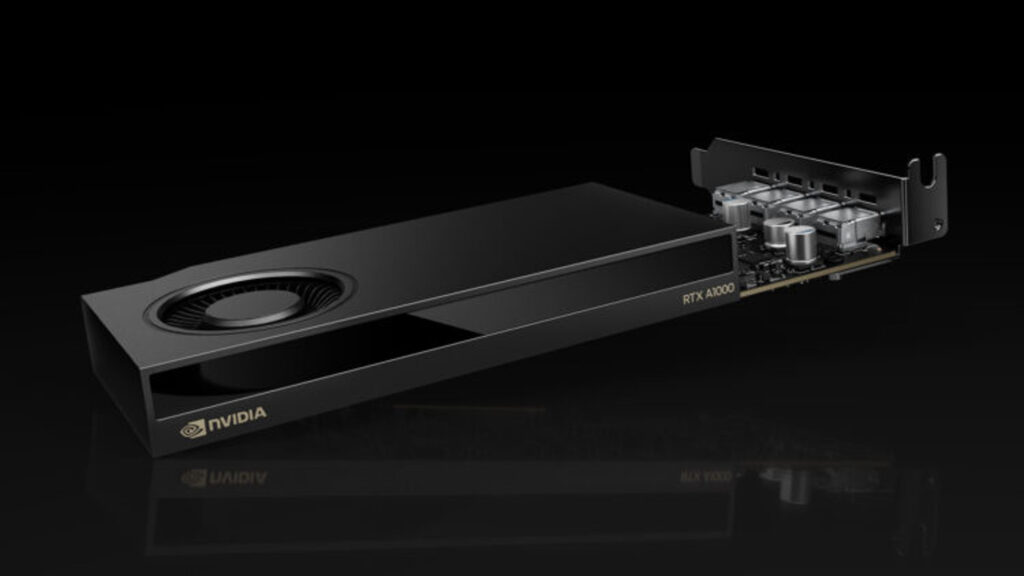Nvidia RTX A400 (4 GB) and A1000 (8 GB) GPUs to enhance AI and visualisation workflows
Nvidia has launched its first entry-level professional desktop GPUs to feature RT cores for ray tracing and Tensor cores for AI.
The Nvidia RTX A400 (4 GB) and RTX A1000 (8 GB) are built on the Nvidia Ampere architecture, which was first introduced in 2020, and not the Nvidia Ada architecture used in its most recent Nvidia RTX 2000, 4000, 4500, 5000 and 6000 class professional GPUs.
According to Nvidia, the new GPUs have AI processing capabilities that surpass traditional CPU-based solutions, enabling professionals to run AI applications, such as intelligent chatbots and co-pilots, directly on their desktops.
With 72 Tensor cores, the Nvidia RTX A1000 is said to deliver over 3x faster generative AI processing for tools like Stable Diffusion, compared to the previous generation Nvidia T1000, which only had CUDA cores.
Both GPUs also offer ray tracing capabilities for next generation CAD software and entry-level viz tools. According to Nvidia, the RTX A1000 with its 18 RT Cores can speed graphics and rendering tasks by up to 3x compared to the previous generation Nvidia T1000.
With a max power consumption of 50W, the Nvidia RTX A400 and A1000 will likely be predominantly sold in compact workstations like the HP Z2 Mini G9 and Dell Precision 3280 CFF. However, with an optional ATX Bracket they can also be fitted to more powerful multi-core desktop workstations. Both GPUs include four display outputs.
What DEVELOP3D thinks
This is a significant launch for Nvidia as it brings dedicated ray tracing and AI cores to its entry-level pro GPUs for the first time. Previously, these capabilities were reserved for Nvidia RTX professional GPUs that were 2000 class and above.
While the new Nvidia RTX A400 and A1000 are equipped for hardware ray tracing, with 4 GB and 8 GB of memory respectively they will likely be best-suited to true entry-level viz workflows.
Perhaps the biggest reason for Nvidia to make these new cards RTX-enabled is to support AI workflows across its entire product range – so when Microsoft (Windows, Office) and others add more AI features into their software, workstation users have Nvidia Tensor cores on hand to do the heavy lifting, rather than having to rely on general purpose Nvidia Cuda cores or Intel / AMD CPUs.






